-
 Bitcoin
Bitcoin $106,437.2012
0.82% -
 Ethereum
Ethereum $2,442.5287
0.82% -
 Tether USDt
Tether USDt $1.0005
-0.02% -
 XRP
XRP $2.1812
-0.27% -
 BNB
BNB $645.1327
0.45% -
 Solana
Solana $146.2379
0.39% -
 USDC
USDC $0.9999
-0.01% -
 TRON
TRON $0.2751
0.92% -
 Dogecoin
Dogecoin $0.1662
-0.23% -
 Cardano
Cardano $0.5827
-1.22% -
 Hyperliquid
Hyperliquid $37.5225
0.04% -
 Bitcoin Cash
Bitcoin Cash $479.0877
4.02% -
 Sui
Sui $2.7846
-3.27% -
 Chainlink
Chainlink $13.3576
0.84% -
 UNUS SED LEO
UNUS SED LEO $9.0252
-1.20% -
 Stellar
Stellar $0.2455
-1.07% -
 Avalanche
Avalanche $18.0680
-1.81% -
 Toncoin
Toncoin $2.8948
-1.07% -
 Shiba Inu
Shiba Inu $0.0...01164
-1.65% -
 Litecoin
Litecoin $85.0637
-0.06% -
 Hedera
Hedera $0.1526
-0.89% -
 Monero
Monero $316.2941
0.78% -
 Ethena USDe
Ethena USDe $1.0003
-0.04% -
 Polkadot
Polkadot $3.4113
-1.87% -
 Dai
Dai $1.0000
-0.01% -
 Bitget Token
Bitget Token $4.4488
5.16% -
 Uniswap
Uniswap $7.1740
3.09% -
 Pi
Pi $0.5968
11.43% -
 Pepe
Pepe $0.0...01010
-0.65% -
 Aave
Aave $264.3189
0.40%
RSI bottom divergence but rebound without volume to confirm the reversal?
RSI bottom divergence suggests weakening bearish momentum, but without volume confirmation, the reversal signal may be unreliable, especially in volatile crypto markets.
Jun 25, 2025 at 04:42 pm
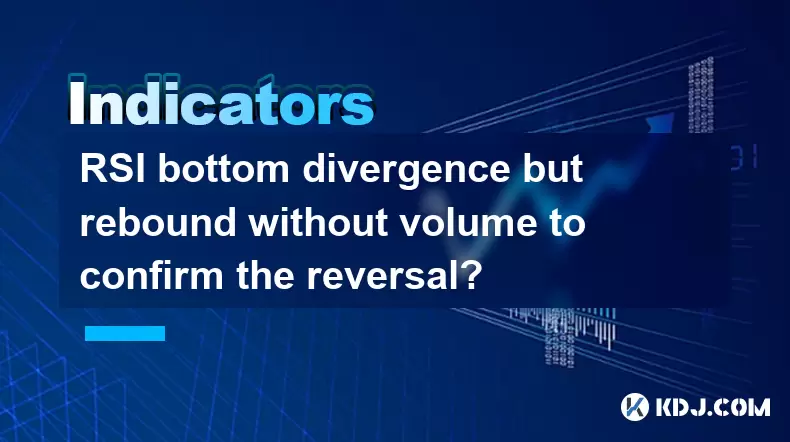
Understanding RSI Bottom Divergence
Relative Strength Index (RSI) is a momentum oscillator used in technical analysis to measure the speed and change of price movements. RSI bottom divergence occurs when the price of an asset makes a new low, but the RSI does not confirm that low and instead forms a higher low. This pattern suggests weakening downward momentum and potential for a reversal.
In cryptocurrency trading, where volatility is high and trends can reverse quickly, recognizing RSI divergences becomes crucial. However, divergence alone is not a guaranteed signal. It only indicates that bearish momentum may be decreasing. Traders often wait for additional confirmation before taking action.
The Role of Volume in Confirming Reversals
Volume plays a key role in confirming any reversal signal. A true reversal typically sees an increase in volume as more traders enter the market in the direction of the new trend. When a rebound occurs without significant volume, it raises questions about the strength of the move.
In crypto markets, which are open 24/7 and highly sensitive to news and macroeconomic factors, volume spikes often reflect institutional or algorithmic participation. If a rally begins without such volume support, it could indicate that the move is being driven by retail traders or short-term positioning rather than a fundamental shift in sentiment.
Why a Rebound Might Lack Volume
There are several possible explanations for a rebound occurring without volume:
- Short squeezes: In futures markets, especially on leveraged exchanges, a quick bounce can trigger margin calls and force shorts to cover, leading to a sudden price rise without real buying pressure.
- Algorithmic noise: Some price moves are caused by bots or automated systems reacting to specific levels or indicators without genuine market demand.
- Whale activity: Large holders might manipulate price temporarily for various reasons, creating false signals that don't reflect broader market consensus.
These scenarios highlight why volume should always be monitored alongside price and RSI readings. Without volume confirmation, the reliability of the RSI divergence weakens significantly.
How to Trade RSI Divergence Without Volume Confirmation
Trading based solely on RSI divergence in a low-volume environment requires caution. Here’s how experienced traders approach this scenario:
- Wait for multiple confirmations: Look for other indicators like moving averages, candlestick patterns, or order flow data to align with the RSI signal.
- Use smaller position sizes: Reduce risk exposure if entering a trade based on divergence alone.
- Set tight stop-loss orders: Protect capital in case the reversal fails and the downtrend resumes.
- Monitor timeframes: Sometimes divergence appears on a lower timeframe (e.g., 1-hour chart), but there's no alignment on higher timeframes (e.g., 4-hour or daily charts).
- Check for correlation shifts: In crypto, Bitcoin often leads the market. Ensure that the underlying asset isn’t diverging from its main index due to temporary factors.
By applying these filters, traders can better assess whether the RSI divergence has real potential or is just a false signal.
Case Study: RSI Divergence in a Low-Volume Rally
Let’s consider a recent example involving a mid-cap altcoin during a broad market downturn. The price made a new low while the RSI formed a higher low — classic RSI bottom divergence. Shortly after, the price began to rise, giving the appearance of a bullish reversal.
However, upon checking volume metrics, there was no meaningful increase in on-chain volume or exchange inflows. The uptick in price was driven by a few large limit orders and bot-driven arbitrage. Within hours, the price resumed its downward trajectory.
This illustrates how misleading a divergence signal can be in the absence of supporting volume. Traders who acted solely on the RSI signal without verifying volume were likely stopped out or entered at unfavorable prices.
Frequently Asked Questions
What is the minimum volume required to confirm a reversal?
There’s no universal threshold. Instead, compare current volume levels to the average volume over the previous 20 periods. A volume spike that is 50% above average may suggest strong participation, but context matters — especially in low-liquidity altcoins.
Can RSI divergence work in sideways markets?
Yes, but with limitations. In ranging conditions, RSI divergence can signal short-term bounces or dips within the range. However, it shouldn’t be interpreted as a breakout signal unless accompanied by volume and volatility expansion.
Is RSI divergence more reliable in crypto than in traditional markets?
Not necessarily. While RSI works similarly across all markets, crypto’s high volatility and thin liquidity amplify both true and false signals. Therefore, divergence should be used cautiously and in combination with other tools.
How do I differentiate between a real reversal and a fakeout using RSI and volume?
Focus on confluence. A real reversal usually includes rising volume, a break of key resistance levels, and positive divergences across multiple timeframes. Fakeouts tend to lack these elements and often fail within a few candles.
Disclaimer:info@kdj.com
The information provided is not trading advice. kdj.com does not assume any responsibility for any investments made based on the information provided in this article. Cryptocurrencies are highly volatile and it is highly recommended that you invest with caution after thorough research!
If you believe that the content used on this website infringes your copyright, please contact us immediately (info@kdj.com) and we will delete it promptly.
- Ripple, Bitcoin, and Crypto History: Unearthing the Roots of Digital Finance
- 2025-06-25 20:25:12
- XRP Price ATH Breakout: Will XRP Hit $7 or Even $27?
- 2025-06-25 20:25:12
- BTC/USD Bull Run: Navigating Cryptocurrency's Geopolitical Tides and Meme Coin Mania
- 2025-06-25 20:30:12
- Dogecoin's Crossroads: Buy Signal or Risky Business?
- 2025-06-25 18:25:12
- Aptos (APT) Price Rally: Bulls Eyeing $7 After Bullish Breakout
- 2025-06-25 18:45:12
- Mastercard, Chainlink, and Bitcoin: A New York Minute on the Future of Finance
- 2025-06-25 19:05:12
Related knowledge
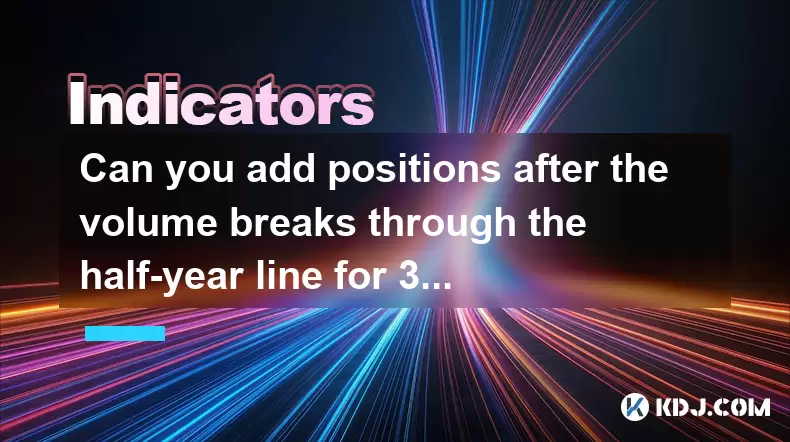
Can you add positions after the volume breaks through the half-year line for 3 consecutive days with reduced volume?
Jun 25,2025 at 08:00pm
Understanding the Half-Year Volume Line in Cryptocurrency TradingIn cryptocurrency trading, technical indicators often guide traders in making decisions. One such metric is the half-year volume line, which refers to the average daily trading volume over a 180-day period. When traders refer to a volume breakout above this line, they are observing whether...
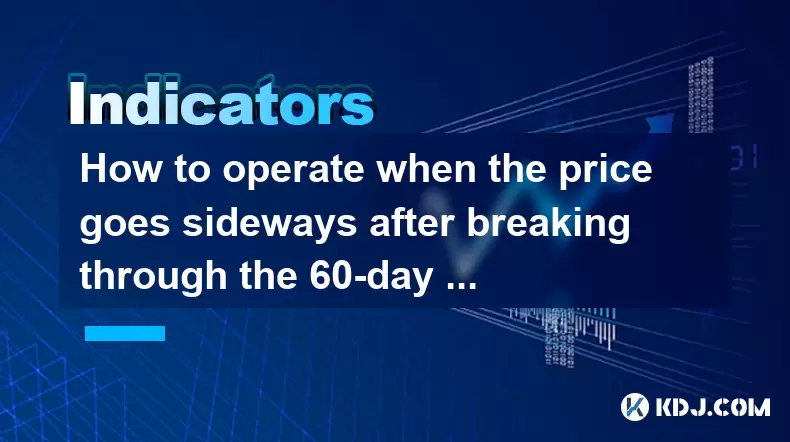
How to operate when the price goes sideways after breaking through the 60-day line with large volume?
Jun 25,2025 at 07:08pm
Understanding the 60-Day Line Breakout with High VolumeWhen a cryptocurrency asset breaks through its 60-day moving average line with large volume, it often signals a potential shift in momentum. This kind of breakout typically suggests that institutional or large retail traders are entering the market aggressively. However, when the price starts to mov...
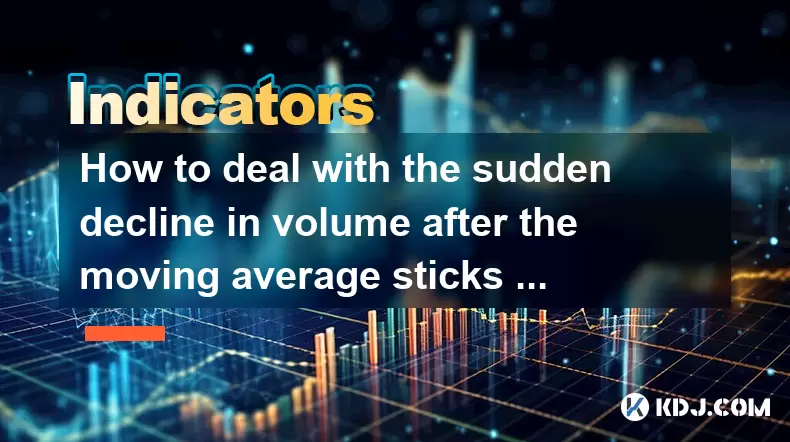
How to deal with the sudden decline in volume after the moving average sticks together?
Jun 25,2025 at 06:35pm
Understanding the Moving Average Convergence and Its ImplicationsIn the world of cryptocurrency trading, moving averages (MAs) are essential tools used to identify trends and potential reversals. When multiple moving averages converge or 'stick together,' it often indicates a period of consolidation or indecision in the market. This phenomenon can be ob...
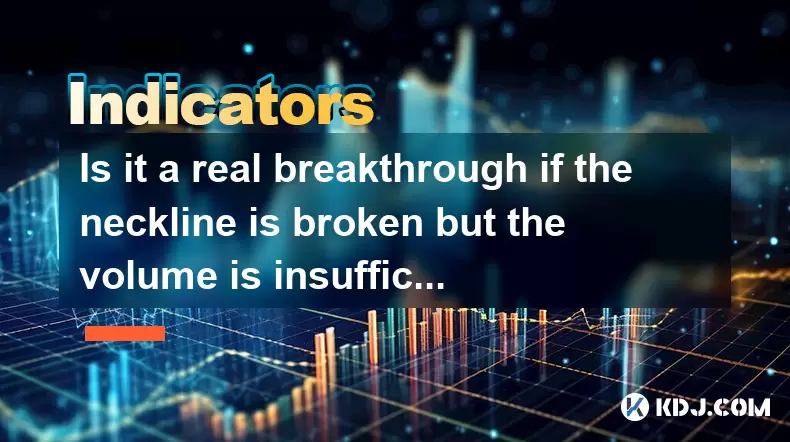
Is it a real breakthrough if the neckline is broken but the volume is insufficient?
Jun 25,2025 at 07:49pm
Understanding the Neckline in Technical AnalysisIn cryptocurrency trading, technical analysis plays a pivotal role in identifying potential price movements. One of the most significant patterns traders monitor is the head and shoulders pattern, which often signals a reversal from an uptrend to a downtrend. The neckline serves as a critical support or re...
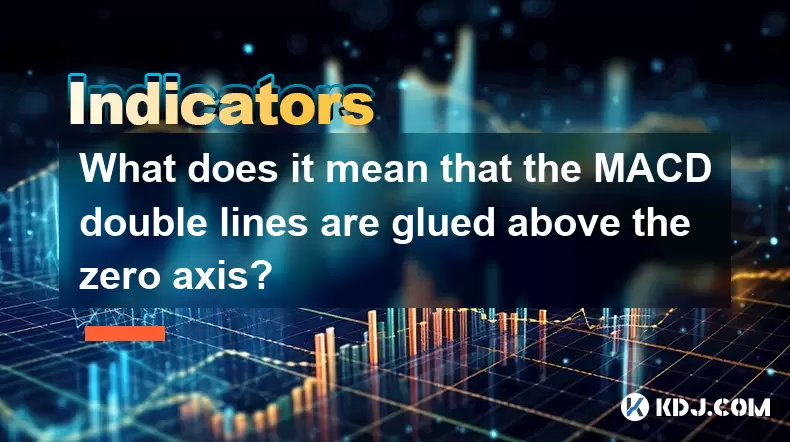
What does it mean that the MACD double lines are glued above the zero axis?
Jun 25,2025 at 07:22pm
Understanding the MACD Indicator in Cryptocurrency TradingThe Moving Average Convergence Divergence (MACD) is one of the most widely used technical indicators among cryptocurrency traders. It helps identify potential trend reversals, momentum shifts, and entry or exit points. The MACD consists of three main components: the MACD line, the signal line, an...
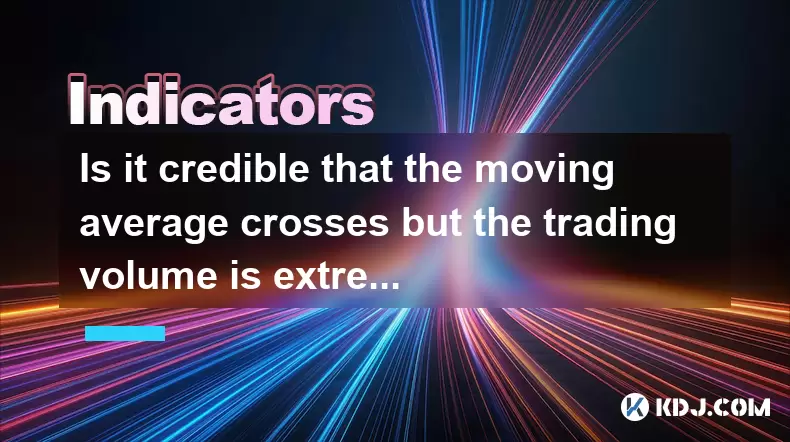
Is it credible that the moving average crosses but the trading volume is extremely shrinking?
Jun 25,2025 at 07:28pm
Understanding the Moving Average CrossoverA moving average crossover is one of the most widely used technical indicators in cryptocurrency trading. It typically involves two moving averages — a short-term (e.g., 9-day) and a long-term (e.g., 21-day). When the short-term crosses above the long-term, it's considered a bullish signal, while a cross below i...

Can you add positions after the volume breaks through the half-year line for 3 consecutive days with reduced volume?
Jun 25,2025 at 08:00pm
Understanding the Half-Year Volume Line in Cryptocurrency TradingIn cryptocurrency trading, technical indicators often guide traders in making decisions. One such metric is the half-year volume line, which refers to the average daily trading volume over a 180-day period. When traders refer to a volume breakout above this line, they are observing whether...

How to operate when the price goes sideways after breaking through the 60-day line with large volume?
Jun 25,2025 at 07:08pm
Understanding the 60-Day Line Breakout with High VolumeWhen a cryptocurrency asset breaks through its 60-day moving average line with large volume, it often signals a potential shift in momentum. This kind of breakout typically suggests that institutional or large retail traders are entering the market aggressively. However, when the price starts to mov...

How to deal with the sudden decline in volume after the moving average sticks together?
Jun 25,2025 at 06:35pm
Understanding the Moving Average Convergence and Its ImplicationsIn the world of cryptocurrency trading, moving averages (MAs) are essential tools used to identify trends and potential reversals. When multiple moving averages converge or 'stick together,' it often indicates a period of consolidation or indecision in the market. This phenomenon can be ob...

Is it a real breakthrough if the neckline is broken but the volume is insufficient?
Jun 25,2025 at 07:49pm
Understanding the Neckline in Technical AnalysisIn cryptocurrency trading, technical analysis plays a pivotal role in identifying potential price movements. One of the most significant patterns traders monitor is the head and shoulders pattern, which often signals a reversal from an uptrend to a downtrend. The neckline serves as a critical support or re...

What does it mean that the MACD double lines are glued above the zero axis?
Jun 25,2025 at 07:22pm
Understanding the MACD Indicator in Cryptocurrency TradingThe Moving Average Convergence Divergence (MACD) is one of the most widely used technical indicators among cryptocurrency traders. It helps identify potential trend reversals, momentum shifts, and entry or exit points. The MACD consists of three main components: the MACD line, the signal line, an...

Is it credible that the moving average crosses but the trading volume is extremely shrinking?
Jun 25,2025 at 07:28pm
Understanding the Moving Average CrossoverA moving average crossover is one of the most widely used technical indicators in cryptocurrency trading. It typically involves two moving averages — a short-term (e.g., 9-day) and a long-term (e.g., 21-day). When the short-term crosses above the long-term, it's considered a bullish signal, while a cross below i...
See all articles
























































































